Trump Administration’s New Policy In Afghanistan – Analysis
By Swati Sinha*
The American war in Afghanistan has entered its 16th year. In the midst of continued externally enabled and resilient insurgency, Afghanistan has also simultaneously entered into its third year of handling the full responsibility of the security of the country by the Afghan National Defense and Security Force (ANDSF).
However, Afghanistan continues to be in a precarious situation, as Taliban has again started gaining control over territory since the beginning of the war. Today, it is in control of more territory than the ANDSF and more than what it held in 2001. Bearing the brunt of this violence is the Afghan civilian. In order to improve the lives of Afghan people, the U.S. has been investing resources to help Afghanistan improve in terms of security, governance, socio-political institutions and economy. Furthermore, for the U.S. government, developing Afghanistan’s security forces into a strong, sustainable force remains their top most priority.
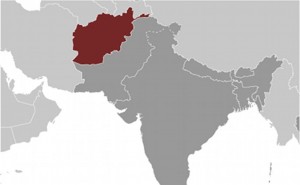
In its press release of June 14, 2017, the Secretary of Defense, Lt. Gen. James Mattis mentioned that President Donald Trump has handed the responsibility to set troop levels in Afghanistan to Department of Defense. According to the Defense Secretary, the DoD remains committed to making progress in dismantling the terrorist groups for Afghanistan to become a safe land.1 There has not been change in the force levels for Afghanistan as per the DoD. The core mission remains the same: providing training, advice and assistance support to the ANDSF.2
Against this backdrop, the paper will study President Trump’s approach towards Afghanistan. Secondly, the paper will critically assess Trump Administration’s new policy in Afghanistan vis a vis the policy of the Obama Administration. Thirdly, the paper will critically analyse immediate challenges before the U.S. in Afghanistan. At the end, the response of Afghan government will be studied in the view of American support and the expectations of Afghan government from the US.
Trump’s Approach towards Afghanistan
President Trump’s approach towards Afghanistan revolves around the U.S. national security interests and objectives in Afghanistan. The U.S. mission in Afghanistan is primarily focused on two fronts: military and reconstruction.
First, on the military side, U.S. troops in Afghanistan, currently numbered at around 8,400 continue to play a pivotal role in ensuring security and stability throughout the country by working alongside the Afghan Security Forces to combat threats posed by the Taliban, the Haqqani network, the Islamic State (ISIS), and other insurgent groups. To prevent Afghanistan from devolving back into a terrorist safe haven, the U.S. will almost certainly have to maintain units in Afghanistan for the foreseeable future.4 It is likely that, a total U.S. troop withdrawal could provide conditions for a civil war. History shows the withdrawal of Soviet troops did lead to the—1992 Civil Wars, and further the rise of Al-Qaeda and Taliban.
Both of President Trump’s predecessors had hoped to win the war. President Bush attained a quick success, by ousting the Taliban shortly after the 9/11 attacks. However, soon after the success, American focus shifted to the Iraq war leading to a resurgence of Taliban by 2005. In refocusing attention on Afghanistan, President Obama was successful in eliminating much of the country’s al-Qaida network and authorized the mission that killed Osama bin Laden however Obama Administration failed to oust the Taliban’s insurgence. In 2009, President Obama had authorized a surge of 30,000 troops into Afghanistan, bringing the total number of troop to more than 100,000, before drawing down over the rest of his presidency. President Trump on the other hand barely spoke about Afghanistan as a candidate or post his inaugural, concentrating instead on crushing ISIS in Syria and Iraq.
In trying to understand President Trump’s Afghanistan approach based on his public statements and policy proposals, he seems markedly different from the Obama Administration’s focus on nation building and strengthening Afghan political institutions.
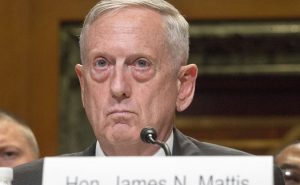
In addition, President Trump’s characterization of Afghanistan as a nexus for terrorism could allow the U.S. to build a new policy that aims at completely dismantling the terrorist factions from Afghanistan. Defense Secretary Mattis has told, “We’re not looking at a purely military strategy. All wars come to an end. Our job is to end it as quickly as possible without losing the very mission that we’ve recognized, through several administrations, that was worth putting those young Americans on the line for.”6 Hence, President Trump’s approach towards Afghanistan till the time being indicates that the purpose of deploying more troops is none but providing training, advice and assistance to ANDSF who are now responsible for the security of Afghanistan.
Trump and Obama on Afghanistan
President Trump’s approach to Afghanistan is divergence from the Afghanistan policy of President Obama. President Trump is committed to deploying the U.S. military forces for a long-term and open-ended deployment in Afghanistan.
President Obama had surged tens of thousands of additional troops in Afghanistan, however, it was simultaneously marked with an ambitious timetable for the withdrawal of the U.S. forces starting from July 2011.7 It had a counterproductive effect of encouraging the Taliban to wait for the Americans to move out of their country to slowly increase their control of Afghan rural territory. In context with these challenges, the Trump Administration is determined not to replicate the mistakes of the past; hence no announcements of withdrawal dates have been made yet. After President Trump handed Defense Secretary, James Mattis the responsibility to set troop levels in Afghanistan, he said, “This administration will not repeat the mistakes of the past. We cannot allow Afghanistan to once again become a launching point for attacks on our homeland or on our allies.”8
In June, 2017, the decision of the number of additional American troops going to Afghanistan was bequeathed to Secretary Defense James Mattis by President Trump. The US Secretary of Defense has put the number of new troops that is expected to deploy to Afghanistan at 3,800, adding to the 8,400 that are already there. The U.S. troop levels that Trump Administration plans to deploy in Afghanistan are far lower than they were under President Barack Obama and President George W. Bush. At the time when President Obama had left office on Jan. 20, 2017, there were 8400 U.S. troops; and there are 6941 U.S. soldiers under the NATO-led Resolute Support (RS) Mission in Afghanistan.9
As understood from the above statements, it is implied that for the U.S. to get a meaningful strategy in Afghanistan, it is equally important to consider the broader regional dynamics of South Asia. The war is important because al Qaeda has not been defeated and is still a threat to the U.S. national security. Pentagon is understandably concerned about the Islamic State and the war in Syria, which has come to overshadow al Qaeda and the war in Afghanistan since 2014.10 But the rise of the Islamic State does not make the Al-Qaeda less dangerous. Al Qaeda and its affiliates remain dedicated to attacking the U.S. interests.
Furthermore, the table below highlights the chief objectives of the Obama and Trump administrations.
|
Obama Administration (2009-2017) |
Trump Administration (2017- present) |
|
|
Challenges before the Trump Administration
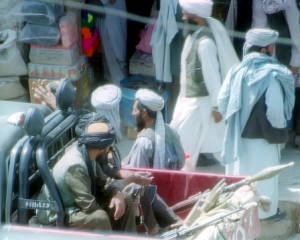
Extremist Groups: Trump Administration is also facing many of the same dilemmas on Afghanistan as the Obama and George W. Bush Administrations: internal security a challenge—including the Taliban insurgency needs to be reduced to a level where the Afghan government could adequately cope on its own. The Bush administration shifted its focus to Iraq, under-resourcing Afghanistan to resolve its structural problems. The Taliban had found refuge in Pakistan and regrouped as the American focus shifted. During Obama Administration—Taliban insurgency was robust and terrorist groups like al-Qaeda and Islamic State were growing. The Obama administration also tried to get Pakistan to cooperate. However, the effort did not yield much result.
The Trump administration has inherited an Afghanistan still critically challenged by terrorism, ISIS has established a branch, al-Qaeda and other terrorist groups remain active inside Afghanistan, and the Taliban continues to pose a challenge to the democratically elected Afghan government, that remains weak and critically dependent on foreign support: military, economic, and political.
Internal Afghan Politics: The problems that soured U.S. support for the Afghan government (then led by PM Hamid Karzai) persist. The huge civilian casualties in Herat province due to violence in 2007 turned things very difficult between Afghanistan and U.S. This incident left a huge impact on then PM Karzai and gave an impression that the American interests to keep American land safe and secure were a priority. However, the National Unity Government (NUG), President Ashraf Ghani remain supportive of the American assistance in Afghanistan. Despite this support, there are some powerful figures that object to the U.S. military presence. Among the most vocal is former Afghan President Hamid Karzai, who remarked in April 2017 that he is committed to “ousting the U.S.”, from Afghanistan.1 The difference of opinions among Afghan leaders is a major disparity that has led to internal political conflict posing further challenge for the Trump Administration.
Regional Politics: At present, Afghanistan is facing dangerous violent insurgency, debilitated by corruption and crime, and struggling with fractions domestic politics and difficult neighbours.2 Afghanistan’s external security environment is even more difficult now than it was during the Obama and Bush years. Pakistan’s position towards Afghanistan has remained unchanged and till Pakistan Army thinks that it has a hold on Afghanistan political structure it won’t change its policies towards Afghanistan.3
Response of the Afghan Government
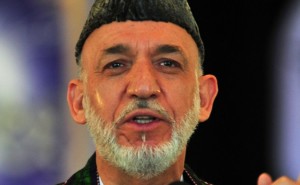
Under PM Karzai the relationship between Afghanistan and U.S., began to deteriorate with arise in civilian casualties as has been described above. In an interview with Diane Sawyer of ABC News, PM Karzai said, “Now, if we concentrate almost entirely and effectively on providing protection to the civilian population rather than chasing the Taliban, the surge will be helpful and effective… we must emphasize that this war on terror must be one that provides protection to the civilians from attacks by the Taliban, from attacks by the terrorists, and by all other elements. In other words, the presence of the international community in this part of the world, in Afghanistan in particular, must be seen by the population as having brought them security and protection, not the opposite of it.”4 He felt that the security and protection of Afghan civilian not being a major concern in the struggle against extremism. This gave rise to a strained relationship between U.S. and Afghanistan under PM Karzai.
The National Unity government led by President Ghani and Chief Executive Officer Abdullah has demonstrated the will to work through a complex set of issues with the goal of addressing much- needed political and governmental reforms. Of all the countries where the U.S. has been engaged in so far, Afghanistan is one of the few places where the local government—led by President Ghani and Chief Executive Officer Abdullah—and the greater part of the local population have welcomed U.S. military forces.
In a video telephonic conference held on July 28, 2017, President Ghani and Vice President of the United States, Mike Pence have discussed a four year development plan for Afghan security. The fight against corruption, reform plans, fight against terrorism, and regional security were the issues that were discussed over the conference. The VP reaffirmed the commitment of the United States and the American nation to Afghanistan to achieve peace and stability and development in Afghanistan. President Ghani has welcomed and thanked the United States and the American people for their support to Afghanistan, calling the United States as one of the main supporters of Afghanistan.5 The Afghan government is optimistic that the capabilities of the Afghan national defense and security forces will further be bolstered with the implementation of the four year development plan.
Conclusion
The U.S. interests in Afghanistan do not diminish the importance of Iraq, Syria, Libya and other frontline states battling terrorist groups. Nonetheless the U.S. seems to be committed to making Afghanistan and neighbouring Pakistan an important and enduring part of the fight against al-Qaeda, Islamic State and other extremists. Since terrorist groups continue to operate in Afghanistan and the region, the U.S. is determined to work with the Afghan government and US allies and partners. Trump Administration is also focused on pursuing political reconciliation where feasible, and target terrorist and insurgent groups that threaten the U.S. This approach may not quickly end the war, but it would be an important contribution to the U.S., regional and international security.
It will only be a matter of time to see if the Trump policy proves fruitful or not. Undoubtedly the world waits to see how effective the policy would turn out to be, and how much will it benefit both—the U.S. and Afghanistan. Reform is an utmost desideratum in Afghanistan, and the U.S. would need to look into the reform measures—both in governance and security aspects. With full responsibility on the shoulders of ANDSF, it will be significant to see how well they are able to accomplish their duty on securing Afghanistan from challenges emanating from both outside and inside of the country. The world eagerly waits to see if President Trump can keep his promises aimed at completely dismantling the terrorist factions from Afghanistan or not.
*Swati Sinha, M.A. Geopolitics and International Relations, Manipal University, Karnataka, India

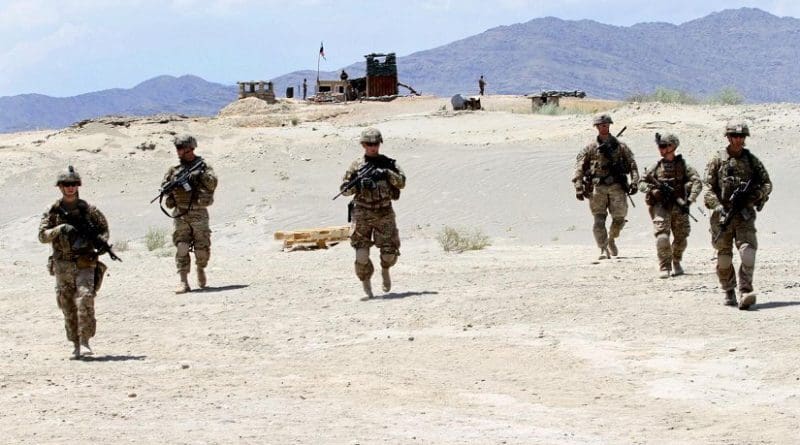
The article is superb.Nicely,focused on the relationship between America and Afghanistan.Informative and valuable.Good work!!!